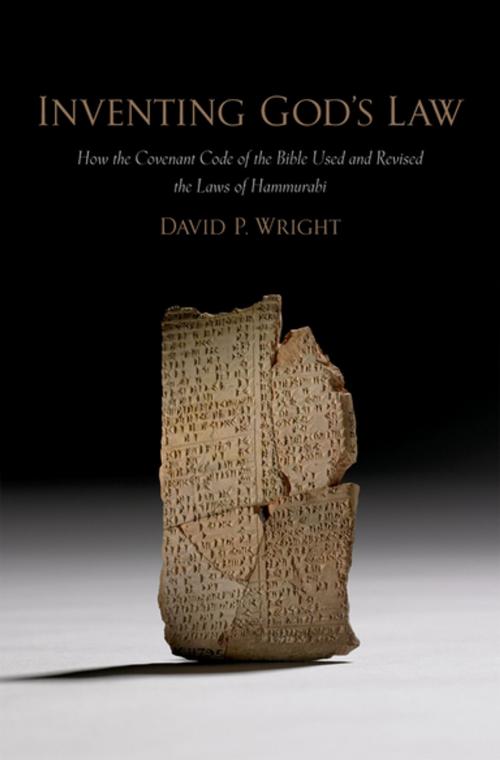Inventing God's Law
How the Covenant Code of the Bible Used and Revised the Laws of Hammurabi
Nonfiction, Religion & Spirituality, Judaism, History| Author: | David P. Wright | ISBN: | 9780199885398 |
| Publisher: | Oxford University Press | Publication: | September 3, 2009 |
| Imprint: | Oxford University Press | Language: | English |
| Author: | David P. Wright |
| ISBN: | 9780199885398 |
| Publisher: | Oxford University Press |
| Publication: | September 3, 2009 |
| Imprint: | Oxford University Press |
| Language: | English |
Most scholars believe that the numerous similarities between the Covenant Code (Exodus 20:23-23:19) and Mesopotamian law collections, especially the Laws of Hammurabi, which date to around 1750 BCE, are due to oral tradition that extended from the second to the first millennium. This book offers a fundamentally new understanding of the Covenant Code, arguing that it depends directly and primarily upon the Laws of Hammurabi and that the use of this source text occurred during the Neo-Assyrian period, sometime between 740-640 BCE, when Mesopotamia exerted strong and continuous political and cultural influence over the kingdoms of Israel and Judah and a time when the Laws of Hammurabi were actively copied in Mesopotamia as a literary-canonical text. The study offers significant new evidence demonstrating that a model of literary dependence is the only viable explanation for the work. It further examines the compositional logic used in transforming the source text to produce the Covenant Code, thus providing a commentary to the biblical composition from the new theoretical perspective. This analysis shows that the Covenant Code is primarily a creative academic work rather than a repository of laws practiced by Israelites or Judeans over the course of their history. The Covenant Code, too, is an ideological work, which transformed a paradigmatic and prestigious legal text of Israel's and Judah's imperial overlords into a statement symbolically countering foreign hegemony. The study goes further to study the relationship of the Covenant Code to the narrative of the book of Exodus and explores how this may relate to the development of the Pentateuch as a whole.
Most scholars believe that the numerous similarities between the Covenant Code (Exodus 20:23-23:19) and Mesopotamian law collections, especially the Laws of Hammurabi, which date to around 1750 BCE, are due to oral tradition that extended from the second to the first millennium. This book offers a fundamentally new understanding of the Covenant Code, arguing that it depends directly and primarily upon the Laws of Hammurabi and that the use of this source text occurred during the Neo-Assyrian period, sometime between 740-640 BCE, when Mesopotamia exerted strong and continuous political and cultural influence over the kingdoms of Israel and Judah and a time when the Laws of Hammurabi were actively copied in Mesopotamia as a literary-canonical text. The study offers significant new evidence demonstrating that a model of literary dependence is the only viable explanation for the work. It further examines the compositional logic used in transforming the source text to produce the Covenant Code, thus providing a commentary to the biblical composition from the new theoretical perspective. This analysis shows that the Covenant Code is primarily a creative academic work rather than a repository of laws practiced by Israelites or Judeans over the course of their history. The Covenant Code, too, is an ideological work, which transformed a paradigmatic and prestigious legal text of Israel's and Judah's imperial overlords into a statement symbolically countering foreign hegemony. The study goes further to study the relationship of the Covenant Code to the narrative of the book of Exodus and explores how this may relate to the development of the Pentateuch as a whole.















